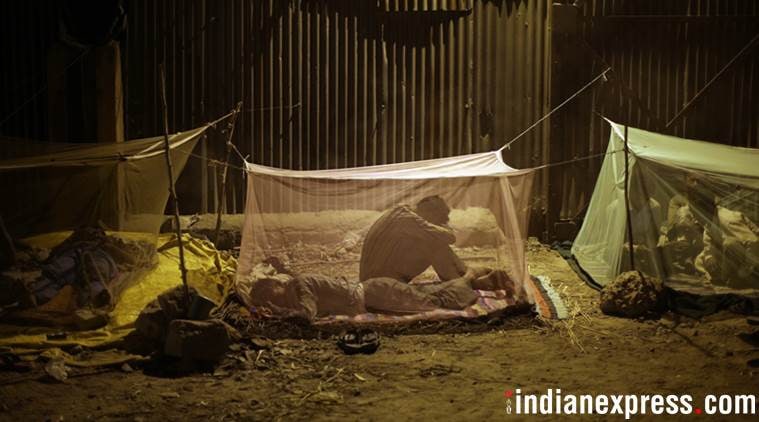
The Rashtrapati Bhavan is the symbol of the seat of power of the government. Within a one-kilometre radius are Parliament, the Prime Minister’s Office, and North Block and South Block that house the key ministries of Home, Finance, Defence and External Affairs. The Prime Minister’s official residence is also within the radius of one kilometre as are the homes of the Vice-President, the Speaker, the three Defence Chiefs and most members of Parliament.
Multiple Conversations
What is the conversation in this power circle? It is about the dismembering of Jammu & Kashmir, the passage of controversial Bills in both Houses of Parliament, the capitulation of regional ruling parties, the dominance of Mr Narendra Modi, the laboured resolution of the issue of the leadership of the Congress party, and the sad passing of Sushma Swaraj. It is about everything except the economy.
Beginning barely 50 kilometres away in all directions from the centre, in practically every village and every poor urban neighbourhood, the conversation is radically different: it is mainly about the economy — the decline or stagnation in real wages and real incomes, the lay-offs and retrenchments, the search in vain for jobs, the death and devastation caused by flood or drought, the crippling shortage of water and electricity, and the fight for survival in an unequal and harsh world.
About 1,150 kilometres away in Mumbai, the city that is home to the RBI, SEBI, the stock exchanges and corporate headquarters of many listed companies and banks, the conversation is about only one thing — money, or the lack of it. It is about the steep decline in the BSE and NSE indices, the depreciation of the rupee, the rising yield on bonds, the mounting losses in public sector banks, the stiff taxes (and the heavy-handed enforcement), the pull-out by FPIs (foreign portfolio investors) and the suicide by V G Siddhartha, promoter of Cafe Coffee Day.
An Uncaring Government
In my view, a caring government will pay the highest attention to the conversation among the working people and the poor. The working classes may share other concerns and even vote according to popular perceptions, but they place their hope only in one thing — the economy. Unfortunately, the economy seems to be the last of the concerns of the government which is barely able to conceal the triumphalism after Operation J&K.
Here is a snapshot of the economy:
1. GDP growth rate continues to decline. After 6.8% for the whole year and 5.8% in the last quarter of 2018-19, the first quarter of 2019-20 doesn’t seem too promising. RBI and others have lowered the forecast for the whole year 2019-20 to 6.9%; hence we will be lucky if the first quarter produces another 5.8%.
2. Core sector growth has dropped to a 50-month low of 0.2%. Capacity utilisation in all manufacturing segments is, on average, below 70%.
3. The rupee is now Asia’s worst-performing currency. It has fallen 3.4% against the US dollar in August.
4. Investment in new projects (private and government) announced in the quarter ending June 2019 declined to a 15-year low of Rs 71,337 crore. The value of projects completed in the quarter fell to a five-year low of Rs 69,494 crore. Revenue earning in rail freight (that comes from carrying coal, cement, petroleum, fertiliser, iron ore, etc) grew by 2.7% in April-June 2019, down from 6.4% in the same period last year.
5. In April-July 2019, exports (merchandise and services) grew by 3.13% over the same period last year while imports declined 0.45%, pointing to depressed economic activity.
6. Consumption is down as never before. In Q1 of 2019-20, car sales were down 23.3%, two-wheeler sales were down 11.7%, commercial vehicle sales were down 9.5% and tractor sales were down 14.1%. July was worse. Industry associations (SIAM and FADA) have reported that 2,30,000 jobs have been lost and 286 dealerships have been shut. In the construction industry, 12,80,000 units remained unsold at the end of March 2019.
7. Consumption of fast-moving consumer goods (FMCGs) was no better. Hindustan Lever, Dabur, Britannia Industries and Asian Paints, among others, have reported volume growth rate in April-June 2019 that is one half or less than the volume growth rate in the same period last year.
8. WPI in July stood at 1.08%. Within the index, the manufacturing sector inflation stood at 0.34%. These are not good signs, they are signs of low demand.
9. Gross tax revenue of the Central government grew by 1.4% in Q1 of 2019-20 as against 22.1% in the same period last year. What this tells us is that incomes are lower for corporates and individuals and spending is less.
Where is the Plan?
We go back to the mantra of four drivers of growth: government expenditure, private investment, private consumption and exports. Evidently, none of the engines is revving up and driving growth. This has been said so many times and by so many people (including acknowledged economists), but the government is unwilling to hear or understand or act. The economy is one area where muscular nationalism will not work. On the contrary, it may work to the detriment of the economy.
This article first appeared in the print edition on August 18, 2019 under the title ‘ Across the aisle: Forgotten — the flagging economy’.